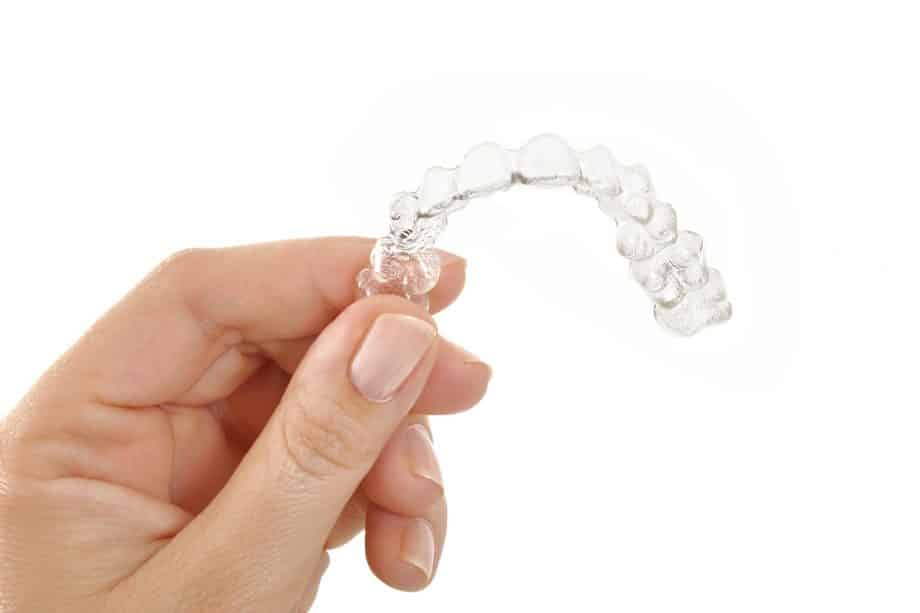Gone are the days when getting braces meant having metal wires and brackets attached to your teeth. Today, patients have another option in Invisalign. The popular clear aligners are designed to gradually straighten the teeth in much the same way as their conventional counterparts.
The biggest difference is that they’re translucent, which means almost no one will know that they’re there. Another key point that sets Invisalign apart is that not everyone is a candidate for the orthodontic treatment. While highly effective, it may not work as efficiently on some imperfections. So how can you tell you’re a good candidate for Invisalign? Here’s what you should know.
How Does Invisalign Work?
Applying conventional braces involves having metal brackets bonded to your teeth and secured with wires. Those wires are adjusted through the duration of your treatment to gradually help your teeth move into the desired position.
Invisalign’s end goal is the same, but the device is dramatically different in that there’s nothing for your dentist to attach. Instead, you’ll receive boxes of clear aligners, or trays, that you’ll wear for one- or two-week intervals. At the end of this stage, you’ll swap for the next set of trays, and so on. Periodically, you’ll see your dentist for a progress assessment.
The aligners shift your teeth gradually during each treatment phase, which is why you need to switch to a new set every couple of weeks. Each subsequent set is uniquely designed specifically for your teeth to accommodate the changes that occur with each one.
By the end of the treatment period, you can expert corrections to imperfections and a straight smile. Treatments vary in length, ranging anywhere from six months to three years or more.
What Are the Benefits of Invisalign?
There are many reasons why you might want to ask your orthodontist about Invisalign. Its popularity has grown over the years due to many of these advantages that set it apart from standard metal braces.
- Tray removal: You’re responsible for removing the trays yourself whenever you eat or drink anything but water. Many patients prefer this impermanence and the fact that they have autonomy over wearing them.
- Hard to see: One of the biggest reasons people like to wear Invisalign is because it’s virtually impossible to see. Even from up close, it’s unlikely anyone will notice unless they already know that you wear clear aligners.
- Oral hygiene: Wearing metal braces can make it tough to brush and floss properly, as the wires and brackets can trap food. You can maintain your usual brushing and flossing habit with Invisalign, though, and better protect yourself from issues like cavities and gum disease during your treatment.
- Less uncomfortable: Some patients find conventional braces uncomfortable, especially when it’s time to tighten the wires. Invisalign, by contrast, only feels a little snug for the first two or three days after switching to a new tray.
Who Is a Good Candidate for Invisalign?
If you’re interested in getting Invisalign, your first step is to visit your dentist for a comprehensive exam of your teeth and gums. This will give your provider a clearer idea of whether you’re a good candidate for the treatment, or whether your teeth would benefit more from Invisalign. Here are some of the factors that make a difference:
Compliance
There’s a certain amount of discipline involved in wearing Invisalign and completing treatment successfully. Ideally, patients should wear their trays for 22 hours per day and remove them only for eating and brushing. Compliance is key to achieve the desired result.
Age
Invisalign is ideal for teenagers and adults who are more inclined to commit to treatment requirements. Children aren’t good candidates simply because they haven’t yet lost their baby teeth. When new teeth come in, they’ll emerge in their permanent positions. Once those teeth are established, metal braces might be necessary to correct bite issues or poor alignment.
Correction
Invisalign can treat many common dental concerns, such as gaps in the teeth, crowding, protrusion, overlapping, crooked teeth, and occasional underbites and overbites. However, it’s not an effective treatment for more complex orthodontic cases that require more extensive pressure. In those instances, metal braces are ideal for shifting the teeth into the desired position.
Condition
Your teeth and gums need to be in good shape to proceed with Invisalign. Your dentist will resolve any issues beforehand, such as cavities or gum inflammation. If you have an implant or a bridge, though, your dentist will not recommend Invisalign. That’s because implants can’t move as they’re surgically implanted in the bone, making it impossible to shift them with aligners.
What If You Can’t Wear Invisalign?
All hope isn’t lost if your provider deems you aren’t a suitable candidate for Invisalign. You may have the option of switching from standard metal braces to the clear aligners once the more complex portion of your treatment is complete. Be sure to bring this up with your dentist if you’re concerned about discretion and would like to eventually wear Invisalign.
Explore Invisalign at Integrated Dentistry
If you’d love to give your smile a makeover and would like to learn more about whether you’re a good candidate for Invisalign, trust in the team at Integrated Dentistry. Our team is committed to your oral health and wellbeing, which is why we offer comprehensive services and treatments tailored to your unique needs. Give our office a call at 479-333-1300 to schedule an appointment today.

